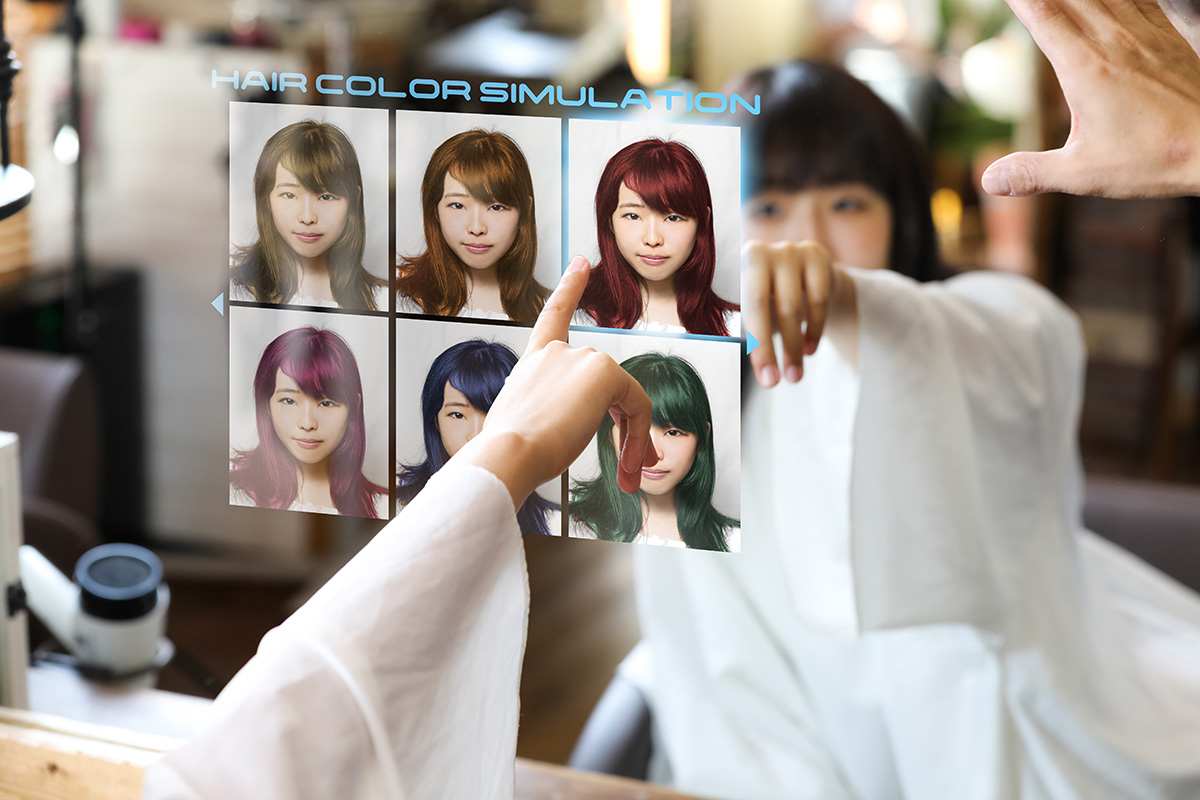Accelerating the AI & IOT solutions enriching our lives


These days, with changes in people’s daily lives due to measures against COVID-19, major changes are also happening in the cosmetics industry.
The number of people working from home and taking part in online meetings is increasing. This has led to an increase in the number of women omitting makeup, which until then had been a part of their daily routine. The pace of this trend has been accelerating around the world. A recent household survey showed that the cosmetics shipping index, which had been increasing steadily, slumped sharply in 2020 in some parts of the world. This has brought to light the current situation in which demand for cosmetics has been falling due to the COVID-19 pandemic. Furthermore, with the addition of the disappearance of inbound demand due to the pandemic, the cosmetics industry is in need of change.
Against this backdrop, products referred to as "beauty tech" that utilize AI, IoT, and other technologies are breathing new life into the cosmetics industry. First, let's look at the background that led to the birth of beauty tech.
Color selection is an important point when consumers choose cosmetics. It is not uncommon for brands to feature dozens of colors in their lipstick and foundation lineups. However, there has been a decrease in the number of opportunities for consumers to try samples in stores and for beauty advisers to suggest products during the COVID-19 pandemic when non-contact has been emphasized. In addition, there is a growing tendency among women to focus on personal colors that harmonize with the natural color of their skin, hair, and eyes. This means that there is an increasing trend for personalized cosmetics.
Beauty tech is being provided by companies in response to such issues and demands.
For instance, a cosmetics brand in Japan has developed an app that suggests optimal colors for cosmetics by using image recognition through artificial intelligence (AI) when the user takes a photo of their own face. A service has also appeared that allows users to purchase eyeshadow with a color recommended by AI at a special vending machine. In addition to cosmetics, the field of hair-coloring agents is also seeing the spread of services that make it possible to do away with color sample bundles of hair on sales floors and to simulate hair color on an app instead.
A U.S. cosmetics brand is providing a custom-made service that mixes foundations that suit the skin color of each individual. It measures the tone of the user’s skin color with a special device to reproduce skin color after the application of the foundation with a unique algorithm. Furthermore, another cosmetics brand has released an AI-equipped device for lipstick. When the user creates their favorite color in the app, the device, which has three color cartridges, reproduces that color. It is able to reproduce 1,000 colors. In addition, the user can also take a photo of the color of lipstick they have seen in a magazine using a smartphone to reproduce the same color lipstick.

IoT mirrors are also being sold by multiple cosmetics brands. The leading devices are equipped with AI, cameras, and moisture measurement sensors in the mirror. They automatically measure the user's skin condition when their face is reflected in the mirror. They then suggest the optimal skin care cosmetics, taking into account the weather and lifestyle information.
There are various types of IoT mirrors, including stand-alone devices and devices equipped to washrooms at home. Moreover, use of these mirrors is also starting to spread to cosmetics sales floors in department stores in the U.S. This has given birth to new applications. The IoT mirror records the beauty adviser applying cosmetics to the face of the consumer in the department store. That video data is then sent to the IoT mirror of the consumer. The consumer can then apply their cosmetics while checking the steps of professionals.
Meanwhile, beauty tech also plays a helping role in cosmetics selection for those with sensitive skin. A sensor-type device developed by a cosmetics manufacturer in France captures minute amounts of sweat emitted from the pores when affixed to the skin. It then measures the pH value (hydrogen ion concentration index). It is expected that this will be effective against dryness, eczema, and other conditions produced when the pH balance is lost.
Beauty tech also detects the health condition of the skin among other factors in addition to making it easier to choose cosmetics that better suit you. It is forecast that various products will continue to appear in the future. This includes expectations that this technology will spread from the cosmetics industry to the beauty industry and then also to the medical field for grasping health condition.